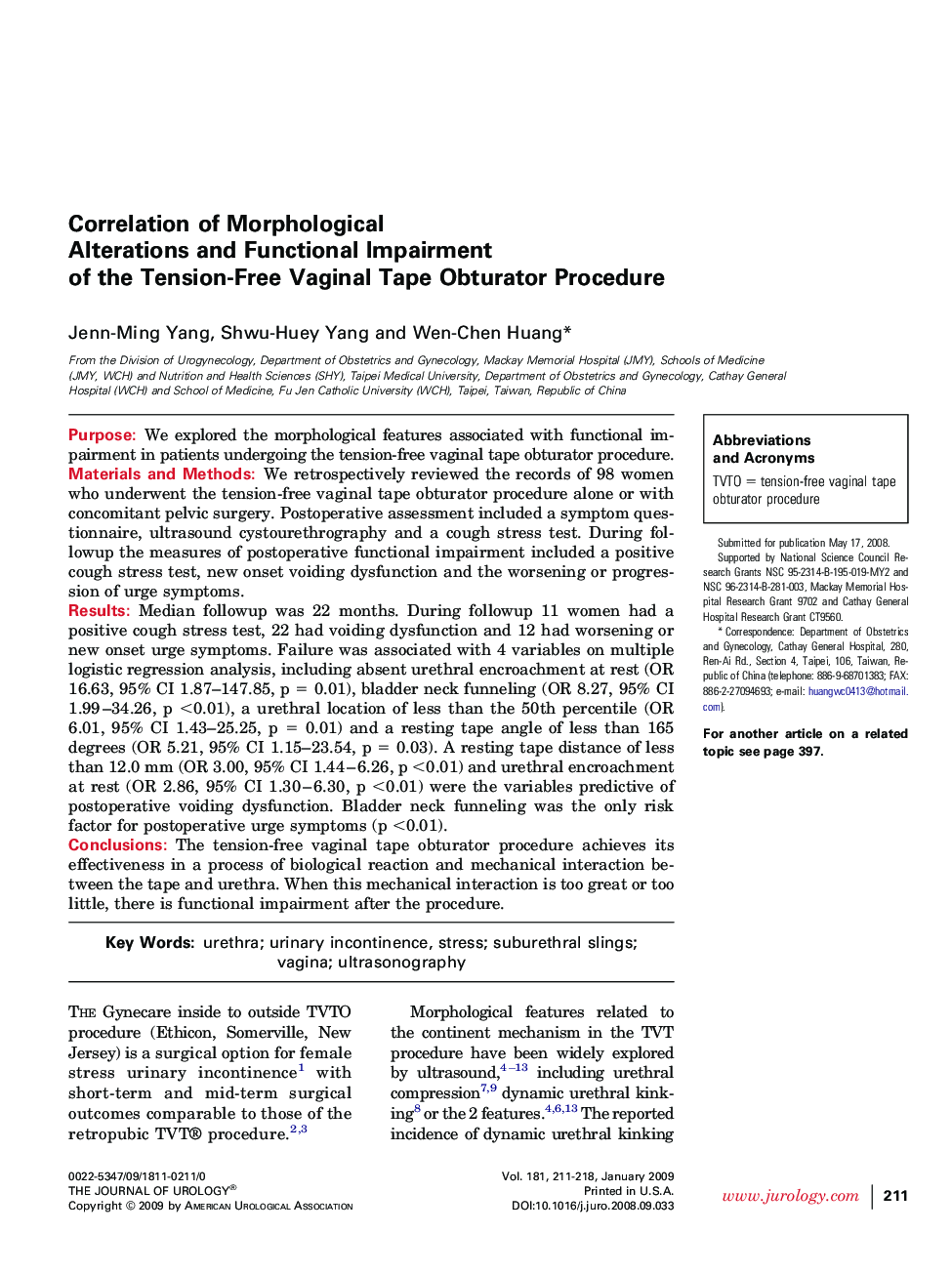| Article ID | Journal | Published Year | Pages | File Type |
|---|---|---|---|---|
| 3872035 | The Journal of Urology | 2009 | 8 Pages |
PurposeWe explored the morphological features associated with functional impairment in patients undergoing the tension-free vaginal tape obturator procedure.Materials and MethodsWe retrospectively reviewed the records of 98 women who underwent the tension-free vaginal tape obturator procedure alone or with concomitant pelvic surgery. Postoperative assessment included a symptom questionnaire, ultrasound cystourethrography and a cough stress test. During followup the measures of postoperative functional impairment included a positive cough stress test, new onset voiding dysfunction and the worsening or progression of urge symptoms.ResultsMedian followup was 22 months. During followup 11 women had a positive cough stress test, 22 had voiding dysfunction and 12 had worsening or new onset urge symptoms. Failure was associated with 4 variables on multiple logistic regression analysis, including absent urethral encroachment at rest (OR 16.63, 95% CI 1.87–147.85, p = 0.01), bladder neck funneling (OR 8.27, 95% CI 1.99–34.26, p <0.01), a urethral location of less than the 50th percentile (OR 6.01, 95% CI 1.43–25.25, p = 0.01) and a resting tape angle of less than 165 degrees (OR 5.21, 95% CI 1.15–23.54, p = 0.03). A resting tape distance of less than 12.0 mm (OR 3.00, 95% CI 1.44–6.26, p <0.01) and urethral encroachment at rest (OR 2.86, 95% CI 1.30–6.30, p <0.01) were the variables predictive of postoperative voiding dysfunction. Bladder neck funneling was the only risk factor for postoperative urge symptoms (p <0.01).ConclusionsThe tension-free vaginal tape obturator procedure achieves its effectiveness in a process of biological reaction and mechanical interaction between the tape and urethra. When this mechanical interaction is too great or too little, there is functional impairment after the procedure.
